For those new to the business of prepping, you can feel no small amount of intimidation from just how much info you need to learn just to have a clue!
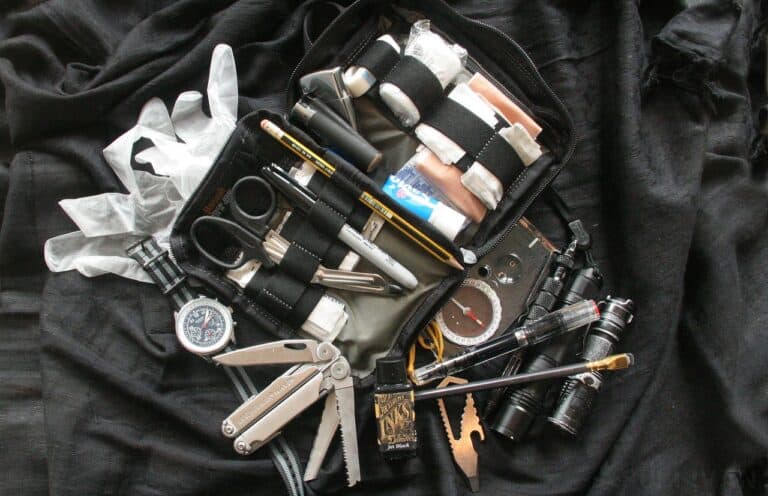
From food long-term storage to fire starting, or land navigation, the sheer breadth and depth of the subject is bewildering, especially if you aren’t coming in from a lifeway that imparted some of the “hard” skills.
I don’t want you to feel overwhelmed and give up on the prospect of taking responsibility for all facets of your own life and survival. Not too long ago, it wasn’t called “prepping”; it was just called life! Life like your great granddad and great grandma lived…
But to help you get a jumpstart on focusing your efforts and energies, we have put together a prepper checklist of the most essential basic preps for beginners.
This list contains the most used and important basic survival items you should have no matter where you live or what kind of disaster you might be facing.
From your home or bug out location to your emergency kit, stock up these items anywhere it makes sense to have them. You can also get this list in PDF format at the end of the article.
Table of Contents
A Quick Reminder
The contents of this list are by design very basic. As mentioned above, no matter where you live and what threat you might have to face, the following items will be useful, even mandatory, but this list cannot cover every contingency or nuance that reflects a prepper’s unique situation where they live.
Depending on your specifics, some figures and recommendations may change. Someone living in an arid desert for instance would probably place even greater importance on water supplies and water filtration than others.
Also keep in mind one of the most basic prepper tenets, starting now: nothing lasts forever, even sitting on the shelf in your cool, dry house. Things wear out or rot away…
No matter the consumable and how well you preserve it, it will eventually go bad or spoil.
Rotating your stocks, that is, using up the items for daily use before they go bad using a first in, first out approach before replenishing will prevent your money and time from going to waste.
For example, if you have some medicine stashed for disaster readiness and it expires or loses effectiveness in six months, you would pull that “stale” bottle of meds and use them before that happens.
Next time you went to the store, you would purchase a replacement bottle and add that to your survival stash. Easy!
And with that, on to the packing list!
Shelter
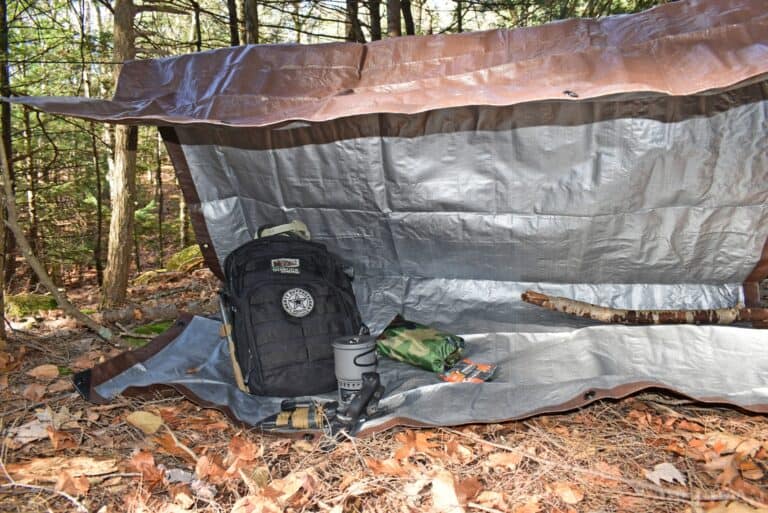
Shelter is the most important survival consideration right after oxygen. Exposure can kill you in hours if bad weather.
The best thing you can do for yourself is to make sure you have some essential shelter gear and supplies on hand even if you plan on riding out the storm in your home: power outages and damage can let the outside in, and the ability to create a smaller.
Disclosure: This post has links to 3rd party websites, so I may get a commission if you buy through those links. Survival Sullivan is a participant in the Amazon Services LLC Associates Program. As an Amazon Associate, I earn from qualifying purchases. See my full disclosure for more.
A more survivable micro-climate inside your home is invaluable. You should get:
- A good tent, appropriate for the size of your family.
- A heavy-duty tarp. You can make a tent from this or use it as a ground cover, wind and sun shade, rain, and so much more.
- Poncho/rain slicker. Getting wet means you’ll lose body heat even faster. Getting wet when it is cold is often a death sentence. Stay dry with a waterproof outer layer.
- Emergency Blankets. These crinkly foil blankets seem like a joke and will make you look like a baked potato, but work wonders for keeping you warm and they take up almost no room or weight.
- Sleeping bag. You need a good night’s sleep, especially in a stressful situation, and a sleeping bag is the most weight and size-efficient method of achieving this, whatever you pack will need to cope with the most severe weather you can expect in your area. If you live in California you can probably get away with a lighter sleeping bag than someone who lives in Alaska, but don’t get caught out by having a summer-weight sleeping bag and having to use your kit in winter.
- Plastic Sheeting. A roll of heavy-duty plastic sheeting, five- or six mil preferably, is a prepper’s best friend. You can use it to catch rainwater, repair damage buildings, create a shelter and a whole lot more.
Fire and Heating
The ability to start a fire isn’t something to only worry about in wilderness survival scenarios. With the power grid down, you’re llikely to rely on using wood, pellets or some other fuel to heat yourself and to cook food.
Stock up on:
- lighters, ferro rods, water-resistant matches
- tinder and kindling,
- wood
As for heating, there are a few popular options you can try:
- A portable propane heater (ideally one that can be used indoor as well if need be)
- Candles, which can be used in conjunction with a couple of terracotta pots to make a clay pot heater
Water
Water is next in importance right after shelter. Dehydration and death by thirst will kill you in three days or so, and you’ll be delirious and incapacitated long before that when you cannot get water.
It is vital that you have a ready drinking supply, potable water, and the tools to produce clean, drinkable water from other sources, man-made or otherwise.
Be sure to pick up:
- One Gallon of drinking water, per person, per day you plan to survive. This amount covers drinking and basic sanitation along with some food prep. Hotter, drier weather means you’ll need more than this.
- Water Filtration Devices, such as the LifeStraw. Another popular personal water filter is the Sawyer Mini.
- Water Container, ideally you’ll want a 55-gallon BPA-free water barrel but 5-gallon containers with sealable lids work well also.
- Water storage. Consider 55-gallon drums or storage tanks, buckets, cisterns – depending on how much you want.
- Bathtub Basin. A large bag designed to sit in your bathtub that you can fill up with water at the outset of a disaster before water is cut off. The most popular such device is the WaterBOB.
- Water Purification Tablets, or unscented, regular formula bleach, for cleansing suspect water of biological contaminants.
#3. Food and Cooking
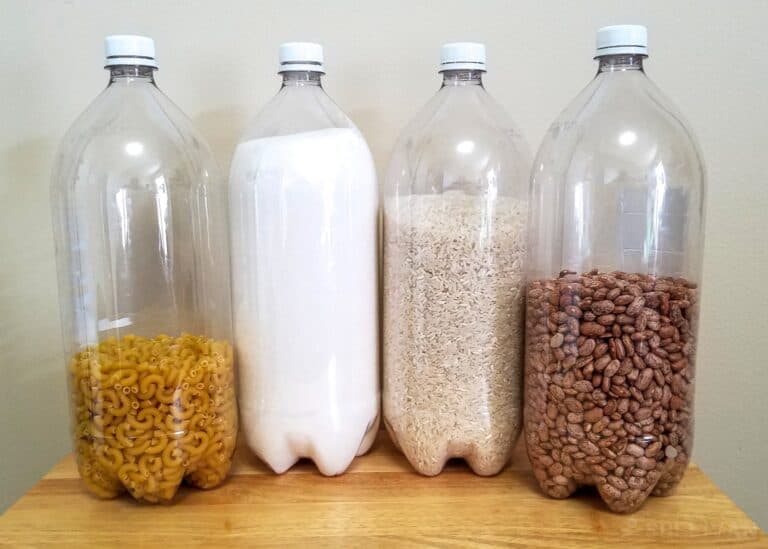
During a disaster survival scenario, you’ll need calories for fuel to keep getting work done. Food, especially hot, good food, is a huge morale booster during rough times…
Just starting out prepping, you can easily and painlessly start building your emergency food supply by adding an item or two each time you make a trip to the grocery store.
Something as small as three square meals for each person for three days will cover for 90% of the things that might happen.
You want about 2,000 to 2,500 calories per person per day for high-activity fueling, but you can ration to stretch an existing supply and go for much less.
Grab your grocery list and add the following:
- Non-perishable calorie-dense foodstuffs:
- Staples like flour, honey, pasta, rice, beans, canned fish.
- Canned and vacuum-sealed foods like meat, soup, veggies, and so on.
- MREs are a good, long-lasting option, but expensive and cause serious constipation.
- Don’t forget your can opener!
- Comfort foods such as hard candy, coffee, and hot chocolate.
- Drink mixes and electrolyte replacement powders for fast energy and variety.
- Basic dining utensils and disposable plates, napkins, a kettle to heat water, etc.
- A solar oven to help you cook basic dishes without electricity.
- Wood stove or oven for cooking.
Also, you may consider getting a portable camping stove. This depends a bit on your approach to survival and your location.
If you live in an area where wood is plentiful I would question whether you need a stove. However, if you live in a desert or plains area where wood fuel might be scarce go for a multi-fuel stove so that you can be as flexible as possible when it comes to finding more fuel once you run out.
There are many options that will work with gasoline, diesel, aviation fuel, and more.
#4. Light
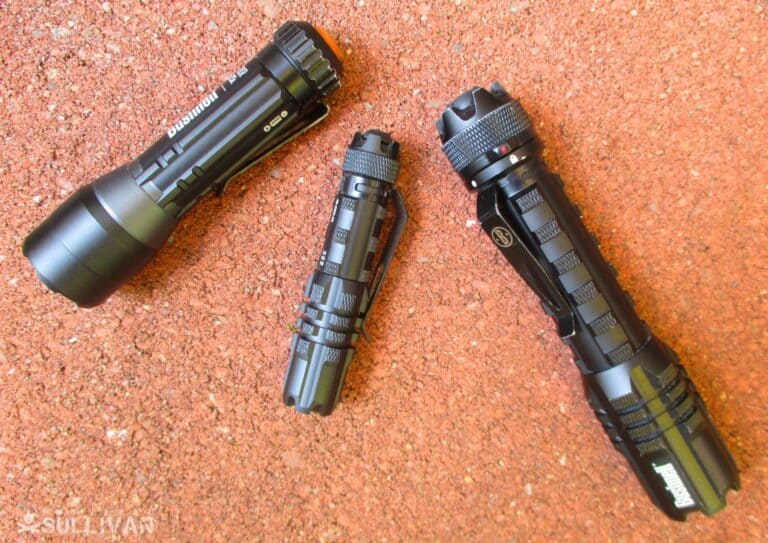
You must assume that the power will go out and not be coming back on for the duration of the crisis. Your go-to buddy for dealing with it is the humble flashlight.
Also consider headlamps as they will allow you to work hands-free with no hassle and without holding a light between your teeth. Lights of all kinds are good for signaling, too!
Add these luminous wonders to your cache as soon as you can:
- Flashlights. Get the best ones you can afford for reliability. LEDs are brighter more durable and use less power.
- Headlamps. Look for models that focus more on close range, useable light, and longer runtime compared to your flashlights. Having them take the same batteries is a big plus.
- Lantern. Battery powered. Alcohol and other gas-powered lanterns work fine but are more dangerous than a good battery lantern. Use this for area lighting at home in the dark or at camp to save power with your battery-gobbling flashlights.
- Batteries. Lots and lots of batteries for all of the above.
- Chemlights. a.k.a snaplights. These raver favorites are superb for marking, signaling, and providing soft but useable area illumination with zero risk of a fire or anything bad happening.
#5. Clothing
You’ll need the right kind of clothes in the aftermath of a disaster, for protection from the elements and also the environment. Make sure you have good clothing ready to go appropriate to all seasons of your home area.
Tough, fast-drying clothes and sturdy boots and gloves will give you an advantage over the sharp, painful things you’ll deal with in the wake of a disaster.
Be sure to stock your stash wardrobe with:
- Sturdy boots or trail shoes, suitable for long-distance movement by foot.
- Warm Weather Clothing.
- Cold Weather Clothing.
- Socks and underwear. Lots of each. Take care of your feet.
- Hat
- Bandanas. The multitool of clothing. Works as a headband, sun blocker, dust mask, etc., etc.
- Sunglasses, preferably ANSI or Mil-STD rated for impact protection.
- Gloves. Go for sturdy classic leather work gloves and light thin technical gloves. You’ll use both.
- Mittens
While you’re at it, don’t forget to get a few wool blankets, and put one in your car’s trunk, so you can keep yourself warm without the engine running.
#6. Communications
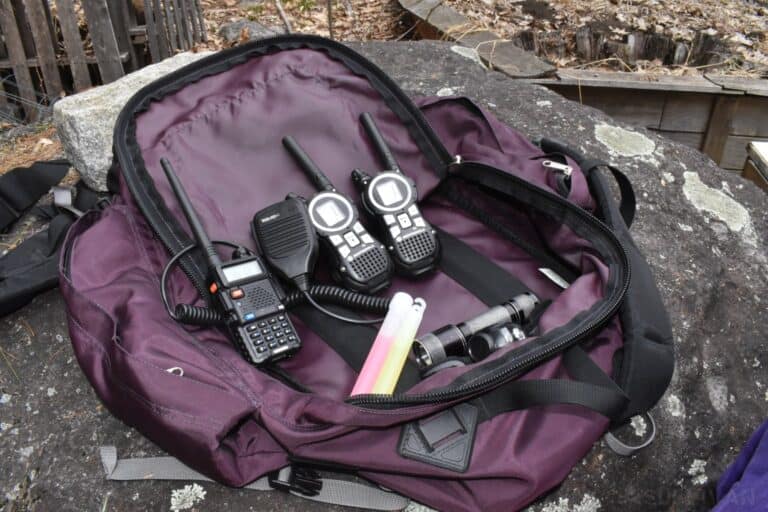
You don’t need to get your ham radio license just yet but you should have a few means of sending and receiving communications.
Keeping in touch with members of your group or family and also the outside world is essential to receive actionable news updates in a timely fashion.
- Crank-powered NOAA emergency radio. Many hand crank radios also have built-in lights and phone chargers. Vital to receive updates from authorities.
- Spare cell phone.
- Extra cell phone batteries.
- An assortment of phone chargers and battery-powered fuel cells (including a solar charger and a hand-crank one).
- Walkie-talkies for easy close-range communication. Make sure you have plenty of batteries!
- CB Radio. The next step after you’re set with all of the above.
- Solar Charger. You don’t have to leave your electronics behind in the middle of a crisis, even if the grid is down. Modern, portable solar chargers are lightweight, affordable and extremely effective. Get one, learn how it works and keep it handy.
#7. Tools
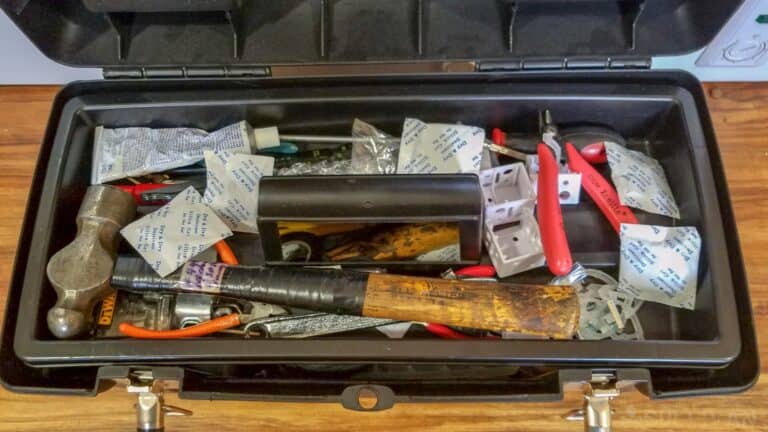
You just can’t call yourself a prepper without a good stash of survival tools. You don’t need to be Mr. or Mrs. HGTV or the second coming of Tim Taylor, but you should have a goodly assortment of tools for taking care of all kinds of repairs and improvised construction or digging yourselves and your neighbors out of rubble.
Manual tools are the way to go here. Power tools gobble too much power. See to it that you get:
| Big framing hammer | Hand saw |
| Hacksaw | Axe |
| Shovel | Prybar |
| Utility knife | Small mechanics kit with sockets and ratchets |
| Duct tape, duct tape, duct tape! | Hank of Paracord or strong accessory cord. |
| All-purpose spray lubricant. | Matches |
| Lighter | Vise grips |
| Screwdrivers | Nails, assorted sizes |
| Screws, assorted sizes | Multitool, for on-the-go fixing |
| Sewing kit |
#8. Knives
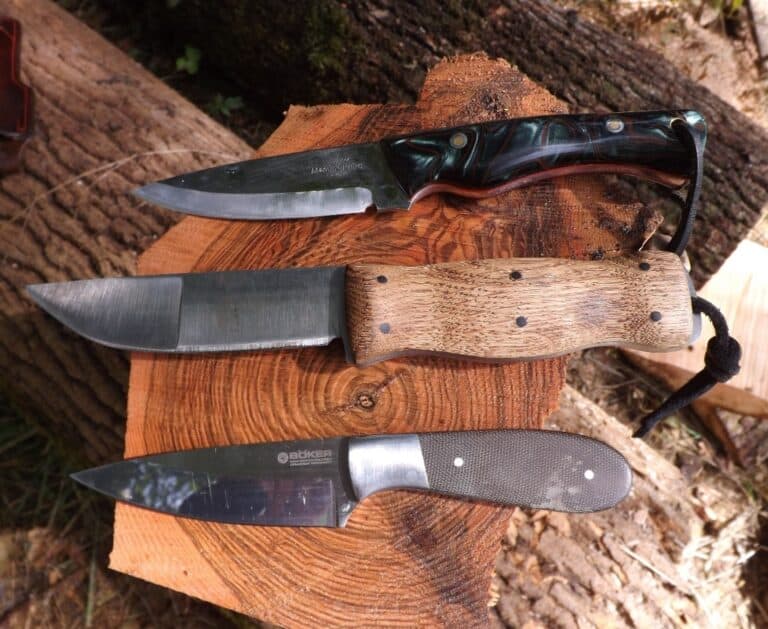
You just can’t call yourself a prepper without a good survival knife! ideally, you will need:
- a solid, fixed-blade survival knife
- a smaller, but still high-quality survival knife such as the Morakniv Companion (my weapon of choice)
- a folding pocket knife for smaller tasks
#9. Weapons
You will need several ways to protect yourself, and keep in mind that not all of them will be available at the time of the attack:
- Firearms – rifles, shotguns, or handguns.
- Ammunition, around 250 rounds for any of the above.
- Knives. Can be your all-purpose knife, above.
- Clubs. A trusty ball bat or length of sturdy pipe works, as does a crowbar.
- Axes. A tool, but a brutal and effective melee weapon.
- Stun gun.
- Pepper spray. One of the best and only effective ranged and non-lethal weapons. Invaluable.
- Kubaton.
Also consider means to protect your body such as body armor, tactical vests, chest rigs, etc.
#10. Medical
You should be prepared with medical supplies to handle everything from trauma to minor injuries and symptoms resulting from illnesses.
Note you will need proper professional training to have the skills and confidence to effectively intervene in even a minor medical emergency, and for the record, you are far, far more likely to need your medical skills than your weapon skills to save the day. Plan accordingly.
Stock your med bag with:
- Minor Trauma Kit – Compression bandages, gauze, gauze pads, hemostatic sponges or gauze, tourniquets, antiseptic, painkillers, antibiotics, and slings.
- First Aid Kit – Band-aids, burn cream, moleskin, liquid stitch, medical tape, pain relievers, anti-nausea meds, antihistamines, alcohol pads, tweezers, eye drops.
- Super Glue. Super glue isn’t just useful for quick and improvise repairs, though it is exceptional for that. It also works wonderfully as a hasty liquid stitch. If you get a small cut or puncture and don’t have time to properly deal with it, clean it out as best you can and dab it with a little super glue to close it.
- Prescription meds
- Prescription eyewear and contacts plus supplies.
- Feminine hygiene products
- N95 masks
- Soap
- Toothpaste, toothbrushes, mouthwash
- Hand sanitizer
#11. Bug-Out Bag (BOB)
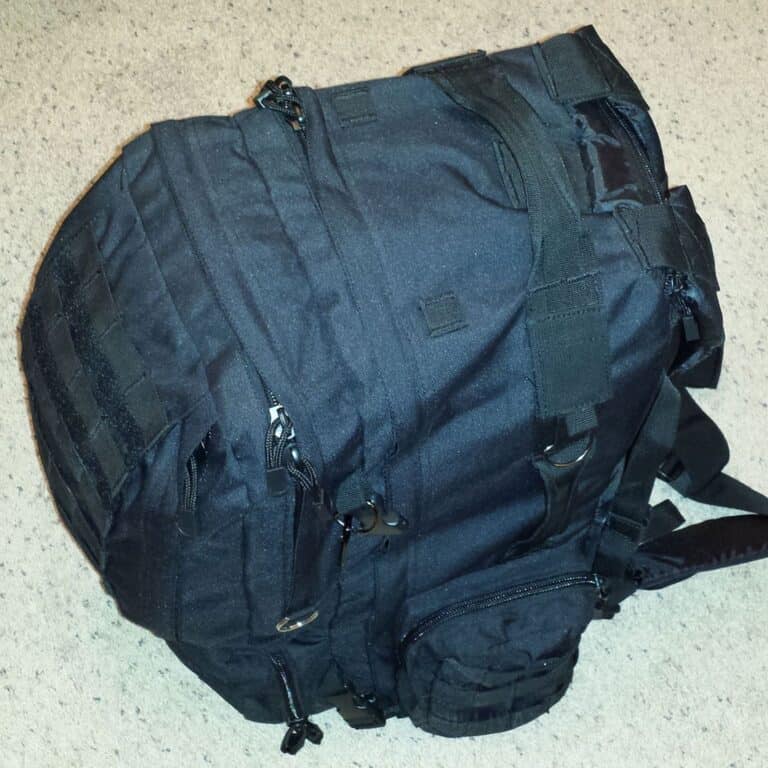
Your bug-out bag, or BOB is one of the most commonly discussed topics in prepperdom.
Your bug-out bag is supposed to be stocked with all of the items we listed above, or at least a representative sample of them, in order to allow you to grab it and go when things look really bad and you cannot wait things out where you are.
If you cannot afford to have two sets of gear, you should make it a point to have a BOB nearby your stash so you can load and go in a hurry.
Your bug out bag should be:
- Durable. You cannot risk a blowout when evacuating.
- Comfortable. It lives on your back, so make sure the suspension and straps work with you, not against you.
- Lightweight. Avoid heavy canvas and leather. Ounces make pounds and pounds make pain when you have to carry it.
You can find a comprehensive list of all the essentials to fill it with here.
#12 Bug-Out Vehicle
A bug out vehicle is another crucially important prep. But don’t worry, it doesn’t have to be some specialized and extremely expensive off-road monstrosity. Your daily driver can be your bug out vehicle as long as it can reliably get you to where you need to go and you plan for some contingencies accordingly.
The first step is keeping your vehicle well-maintained and servicing it at regular intervals. The second step is keeping the following gear with it so you’ll be prepared for problems while on the road.
- Spare Tire. The importance of a spare tire should be obvious. Make sure you keep this tire checked, inflated and rotated just like the rest. Don’t rely on a donut; you want a full-size spare here.
- Jack. If you’re going to change a tire you’ll need a jack. The compact Jack that came with your vehicle might be okay, but consider investing in a bigger and more capable model. Farm jacks might be needed for 4x4s, and are useful for other things besides.
Blowout Kit. Sometimes you won’t have access to a spare tire, and sometimes your spare itself might go down! A blowout kit will allow you to reinflate or stabilize a punctured tire so you can get back on the road and at least limp to a place to get it fixed properly. - Spare Parts. Basic spare parts for your vehicle are mandatory if you want to be ready for a real crisis situation. This should be things like fuses, hoses, belts and any other components that you can easily change yourself and you know that your vehicle is prone to break.
- Vehicle Tools. A compact toolset that will help you replace those spare parts we just talked about. Know how to use them and make sure you have all of the relevant size sockets and wrenches for your make and model of vehicle.
- Cargo Bays and Racks. The best thing about a BOV is that it can allow you to carry a lot more cargo than you could on foot. But you got to have some place to put it. Your trunk or truck bed might be fine, but consider adding rack storage and external cargo baskets if you really want to be ready to evacuate by vehicle.
- Vehicle Fire Extinguisher. Most vehicle fires that start are easily extinguished before they get out of control if you have a fire extinguisher. If you don’t, you’ve got less than 30 seconds before you can watch your entire car go up in flames. Get a vehicle fire extinguisher or two and mount them securely in brackets.
- Flares. Accidents happen, and whatever the reason you’re pulled over on the side of the road the most likely disaster that will then affect you is being hit by traffic. Nothing is more visible or more reliable than chemical road flares. Get a half dozen and keep them in your vehicle in a case.
- Seatbelt Cutter. Being trapped in a vehicle after it has crashed or flipped over is a bad outcome, especially if the vehicle is about to catch fire and your seatbelt is jammed. Mounting a seatbelt cutter securely near the driver seat will help you extricate yourself in a flash.
- Window Breaker. Getting out of your seatbelt is only half the battle. Getting out of the car is another, especially with a jammed door. A window breaker will instantly shatter side windows and allow you to get out in a hurry. Again, mount it securely where you can reach it at all times with either hand.
- Compressor. A portable compressor, powered by your battery or your vehicle’s electrical sockets, will help you easily reinflate the tire on your vehicle or someone else’s when needed.
- Rooftop Tent. If you have a truck, 4×4 or other specialized off-road vehicle consider the installation of a rooftop tent. This can allow you to pull over and bivouac comfortably and in very short order, and it gets you up off the ground which will help you stay warm.
- Folding Shovel. A folding shovel like an entrenching tool is great to have if you get stuck in snow, sand or soft soil.
- Bag of Sand. Likewise, if you’re on a slippery surface and can’t get any traction a bag of playground sand can be poured just in front of your tire to give some much-needed grip and maybe get you out of a jam. A 10- or 20-pound bag is plenty.
- Tow Straps: sometimes, you just can’t self-extricate. If you’re traveling with someone else or have a Good Samaritan stop to help you, tow straps will allow you to easily and safely get your vehicle back on the pavement.
- Winch: if you don’t want to rely on anyone else, and your vehicle can support mounting one, nothing beats a winch for getting out of a tight spot. Be warned, using one takes training and they are dangerous, so learn how to use it before you commit.
- Fuel Can. You won’t go far without any gas, so carrying a little bit extra with you is smart. Likewise, you might have need to fetch some gas or give some to someone else. Using approved, safe fuel can in an external carrier for safety.
- Siphon. In a major catastrophe, there will be plenty of smashed and abandoned vehicles around. A siphon will allow you to extract gasoline from fuel tanks and other hard-to-reach places in an emergency when you need it desperately.
#13 Nav Gear
No matter where you are going, and no matter why, you’ve got to know how to get there. Don’t rely on your own sense of direction or on visual landmarks alone. Remember, the landscape might be radically altered by whatever event has occurred.
This is where navigation gear can save the day.
- Compass. The most fundamental navigation tool is a compass. It sounds rudimentary, and it is, but just knowing which way is north and which way you are heading can help you get there without anything else if you use some common sense and dead reckoning.
- Road Atlas. A road atlas is an indispensable travel companion, and should be kept either in your vehicle or in your bug out bag at all times. Keep in mind, you might need it to help someone else and get to you and not vice versa.
- Topographical Maps. City maps and atlases are fine, but you must be prepared for going cross country either on foot or in a vehicle. It’s a blind business without topographical maps of your region.
- GPS. Lots of folks knock GPS systems as too fragile to be relied on in a major crisis, but that just isn’t true. Only a truly cataclysmic event will completely knock out the GPS network, and the satellites themselves are safely up in orbit. Get a good standalone GPS system, learn how to use it and keep it charged.
#14. Entertainment
To avoid bordemon after a collapse, and to keep your mind off the unfolding tragey, consider having:
- board games
- deck of cards
- e-reader with loaded e-books
- printed books
- puzzles
- tablet with some preinstalled games
#15. Other Items
I know this sounds like a lot but consider the following as well:
- cash
- whistle
- trash bags
- maps of the area
Non-Items Checklist
Buying a bunch of gear won’t make you safe. Your existing skillset can make or break you when disaster strikes, so it pays to get ready now.
Beyond skills, there are a few more basic, painless preps you should put in place now so you aren’t scrambling when the sky gets dark and the mountains start rumbling.
- Focus on basic skills. Don’t over-complicate things, focus on the most important ones, and practice them constantly. We have literally hundreds of articles to get you started right here on Survival Sullivan.
- Focus on improving your fitness levels. In the midst of chaos, you’re going to need to be physically strong to overcome whatever challenges may come your way. High physical fitness also helps your mental state by reducing stress levels.
- Learn first aid skills. Things like CPR could be a lifesaver at some point.
- Mental preparedness. This is the toughest one to learn. It starts with you being honest with yourself and where you are right now, using visualization techniques to train your brain to react to emergencies, and controlling your thoughts.
- Make a file with all your relevant personal documents and important info. Think IDs, titles, mortgages, insurance policies, deeds, medical records, social security cards, etc., etc., and stashing it all on a flash drive, then encrypting it. Keep it with your BOB or survival stash you can access it when you need it. Make sure it doesn’t fall into the wrong hands!
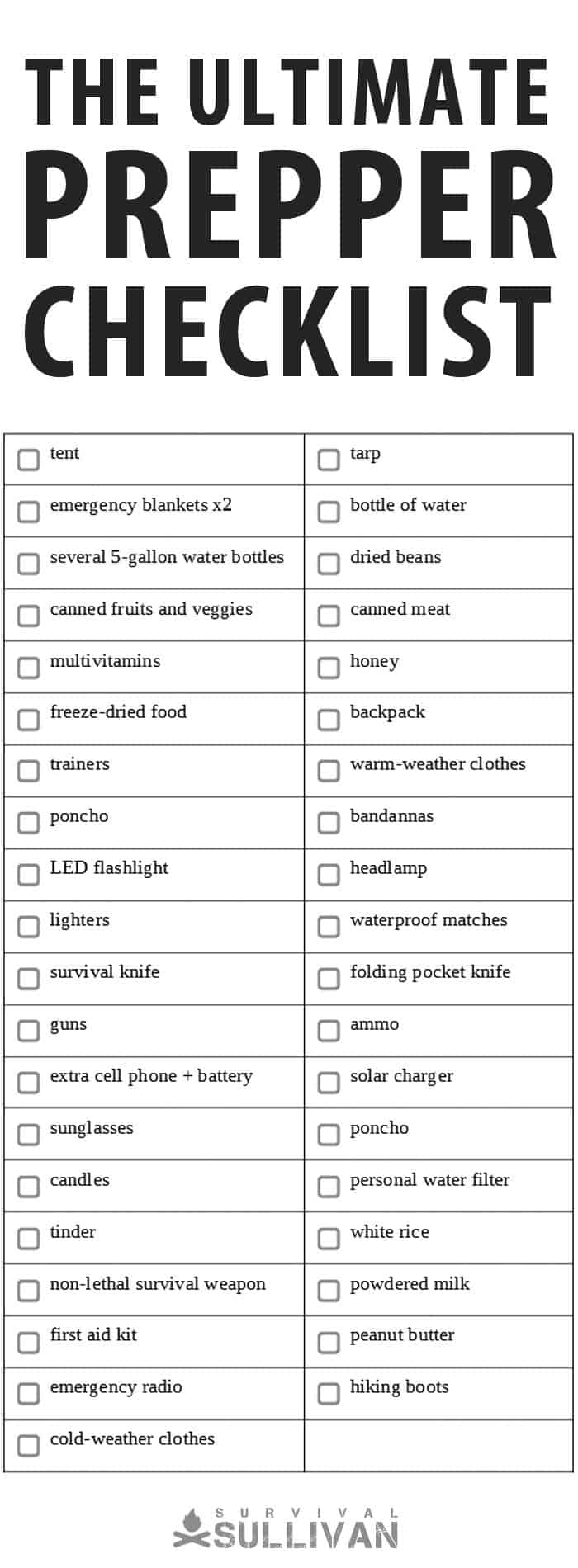
Just Take It One Step at a Time
Of course, this is only the beginning. Everyone has their own needs and concerns. Some people have to work around disabilities or elderly family members. Some people have very small children. Some people are alone or have greatly limited budgets.
The best way that I’ve found to start getting survival items and making preparations is to just start. There is always something you can do, even if it is practicing a skill, reviewing a map of your best escape routes, or adding one lousy can of peaches to your stash.
Should you cheap out on these things? I wouldn’t. They might save your life one day, you cannot afford for them not to work when you need them most. That being said, many good quality items can be had for modest prices today.
With so many online reviews, blogs, and videos, you can easily get a sense of the ones that give you the most bang for your buck. And if you’re patient enough to wait for discounts, you’re likely to get some pretty sweet deals!

So, are you ready to get started putting together your survival packing list? You can print this PDF checklist and tick off each item as you get it. Oh, and don’t forget to pin this to your favorite Pinterest board for later!
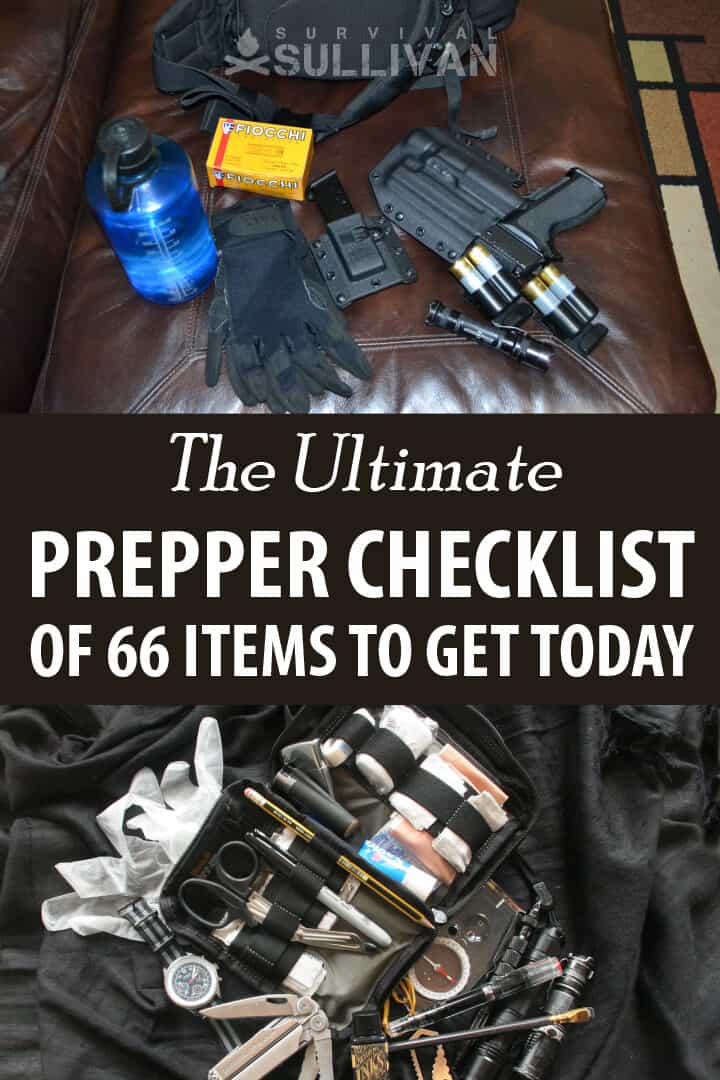

My dad was military. My grandfather was a cop. They served their country well. But I don’t like taking orders. I’m taking matters into my own hands so I’m not just preparing, I’m going to a friggin’ war to provide you the best of the best survival and preparedness content out there.

#4 “…and more…” How true. If your wife begins to question why the garage or spare bedroom is starting to look like a min-Bass Pro Shop, your only defense is, “I don’t know what type of emergency, when nor how long. But, I doubt I can get what we need, when that time comes.”
The best way to start is going to prepper web sites and Pintrest. Always ask yourself, “Who, what, where, when, why”. With very few exceptions, you will find everything you do or need to learn or need to acquire will take on a layered format. Two examples, fire and water.
First, fire. Although one of these might be sufficient, you should have a few more options. Storm proof matches, bar-b-que lighters and a magnesium fire starter. And, something to catch fire. White, cotton makeup removing pads, impregnated with Vaseline. I also carry a handful of scrap cedar tinder. Pick up scraps of paper as you adventure on.
Second, water. The life straw is essential. One per person. One? Why? What if you get separated and there is only one straw. Somebody is going without. As good as the straw is, you also need a way to collect, purify and carry water. Why? Unless you plan on hiking along streams and rivers, you may have to go some distance between water sources.
Happy trails.
My preps also include the “essentials”
1. Solar powered mini refrigerator
2. Church Key
3. Chips
4. Salsa
5. Beer (can or bottle (see 1. & 2.)
6. Folding lawn chair with mini table with cup holder
7. ( The most important of all ) Toilet Paper (I’m not us’n leaves)
Well…At least you’ll be happy
i suggest hornet spray rather than pepper spray. As defence is only as good as a good offense. its dual purpose. Also easier to defend in court than some homemade solutions you see suggested online.
I have also added portable solar panels and inverters with ham radio and gas mask and radiation detectors
Couple of suggestions.
1) Hobo tool for eating instead of disposable utinsiles.
2) Less garage tools. I have a Leatherman Supertool and a collapsible bow saw. A combo hammer / hatchet is also good.
3) lots of paracord.
4) Camping plates or bowls. I have stainless steel compartment trays and bowls. Titanium is lighter and stronger but twice the price.